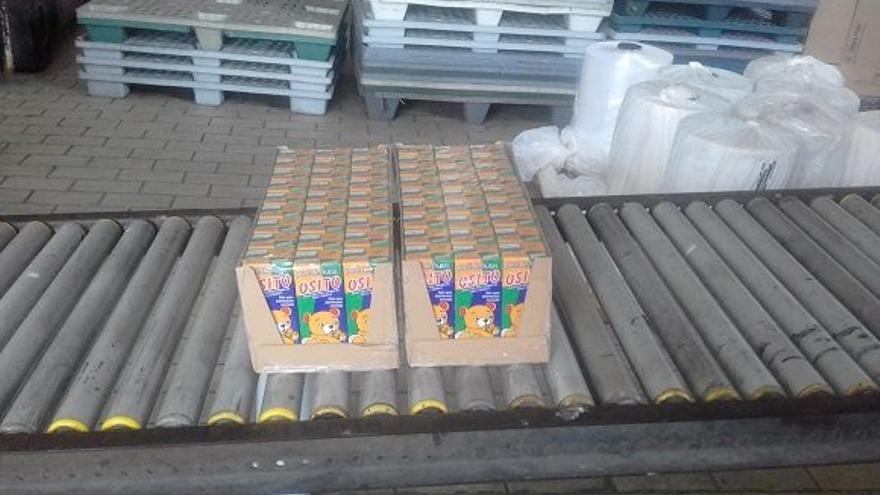
![]() 14ymedio, Havana, December 15, 2021 — Of all the products manufactured in Sancti Spríritus, only one has met its monthly basic food basket target: Osito baby food, a product distributed to children under three years of age despite having a significant amount of added sugar, an ingredient not recommended for children that age.
14ymedio, Havana, December 15, 2021 — Of all the products manufactured in Sancti Spríritus, only one has met its monthly basic food basket target: Osito baby food, a product distributed to children under three years of age despite having a significant amount of added sugar, an ingredient not recommended for children that age.
The product is made by Alimentos y Bebidas La Estancia in its provincial processing plant, which just five days ago received an award for producing and selling juices and nectars “in modern cardboard containers, a unique technology in the country” and meeting “the Codex Alimentarius requirements, which form part of the Joint Program of the United Nations Food and Agriculture Organization and the World Health Organization,” emphasized the state’s official press.
Osito baby food, which is distributed as part of the basic food basket is sold in 200 ml containers and is made with fruit pulp, water, sugar, starch, citric acid, vitamin C and iron lactate. According to the nutritional information distributed by the company, it does not contain preservatives, food coloring or artificial flavors, but it does contain between 10 and 12 grams of sucrose.
“Most of us believe that the only type of sugar is table sugar, or refined sugar, but the well-known added sugars have different names that we do not recognize, such as sucrose, glucose polymers, maltodextrin, corn starch, glucose and dextrose syrup. It is important to begin to recognize these types of sweeteners in the products we buy if we want to make healthy decisions,” insists Ingrid Jiménez, Colombian infant nutritionist.
In 2019, the WHO called the international community to reduce sugars in babies’ diets. According to studies, the consumption of this additive is not only excessive, but also stimulates a preference for sweetness at an early age, with negative results such as overweight and obesity, diabetes and cardiovascular problems.
The American Heart Association cautioned against this extreme, warning that there “is solid evidence linking added sugars with high risk of cardiovascular disease in children.” Since then, its official position is to recommend that children under two years of age not consume any sugar.
Between two and three years of age, children should not consume more than 15 grams of this ingredient per day, adds the Association. One serving of this Osito baby food, consumed by thousands of babies in Cuba, provides nearly the entire recommended amount of sugar, which is counter to the recommendations of medical associations.
The WHO recommends that products containing added sugars should not be consumed by infants or children less than three years of age. This does not apply to sugars derived from fruit, which in the case of Osito baby foods, is between 8 and 10 grams, but it does apply to the well-known sucrose, present in the diets of Cuban children, with the approval of the Ministry of Public Health.
Nonetheless, many pediatricians on the Island recommend against this product. “I do not know anyone who gives baby food to newborns,” says a stay-at-home mom in central Havana. “My children did not eat these until after a year and a half, I’d venture to say even later.” She said, “Those baby foods make children sick to their stomachs.”
“Some people store them, but in most cases, they either sell them or they reserve them for the older children in the household,” agreed the woman’s neighbor.
The baby food producer, Osito, has spent two years meeting the targets established by the State without issues, although in mid-2019 they warned that the scarcity of inputs could affect their ability to deliver. Cuban consumers have met with ire the successes as well as the failures of production, they fear its absence or consider the allowable amount to be too low (seven servings per month), without realizing how harmful the added sugars are, especially for children.
Covering a pacifier in sugar, placing honey on a baby’s lips to calm him or her, adding sweeteners to infant’s milk from a very early age and other practices like these continue to be a constant in Cuban households where sugar is still viewed as a food with high nutritional value.
In the country which yesteryear was the “the world’s sugar producer,” around two kilograms per person per month are subsidized and distributed through rationed markets. In addition, several recipes for syrup-covered sweets, flans, puddings, custards and candies are consumed each day by households on the Island.
Despite recognition by the Ministry of Public Health at the end of 2020 that the prevalence of diabetes mellitus was 66.9 per 1,000, official channels have not adopted a campaign centered on reducing sugar consumption. In school lunchrooms, day cares and fairs organized by the State, sweet foods are a priority.
With the subsidized sugar, the Cuban Government manages to meet the daily caloric requirements that the FAO (United Nations Food and Agriculture Organization) recommends per person to maintain health and develop functionally.
____________
COLLABORATE WITH OUR WORK: The 14ymedio team is committed to practicing serious journalism that reflects Cuba’s reality in all its depth. Thank you for joining us on this long journey. We invite you to continue supporting us by becoming a member of 14ymedio now. Together we can continue transforming journalism in Cuba.
